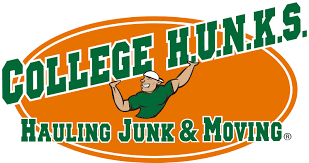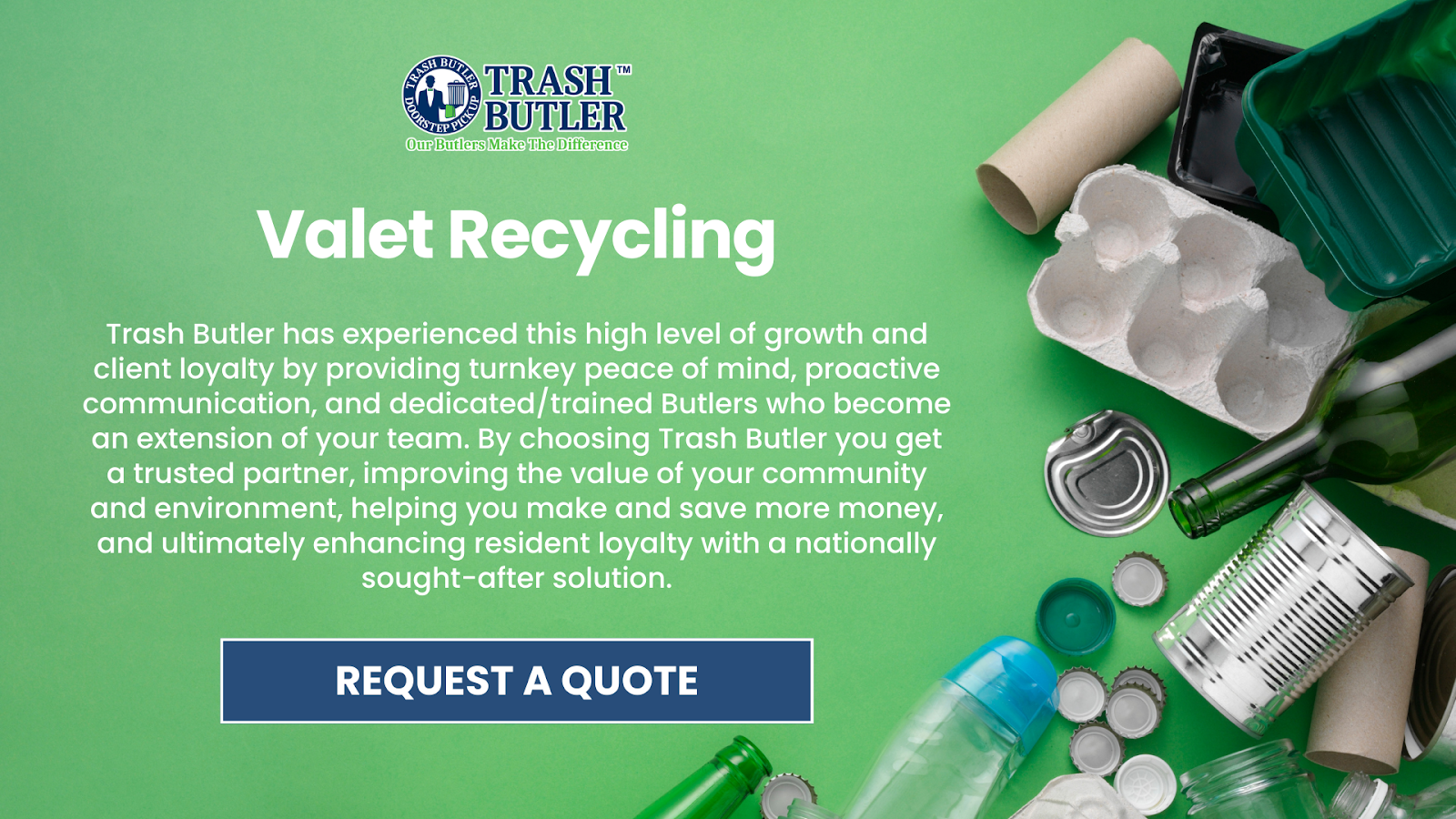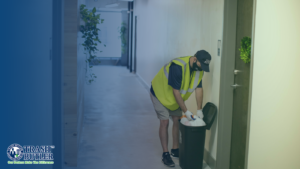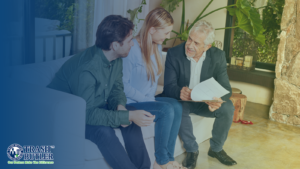Key Takeaways:
- Enhance Tenant Satisfaction: A proactive maintenance plan increases resident satisfaction by promptly addressing issues, leading to longer leases and reduced turnover.
- Preserve Property Value: Regular maintenance helps maintain the aesthetic appeal and functionality of your property, attracting prospective residents and maximizing rental income.
- Implement a Balanced Approach: Combine routine and preventive maintenance for a comprehensive strategy that minimizes costly repairs and extends the life of property systems and equipment.
Managing a multifamily community can feel overwhelming, especially when maintaining the property and ensuring tenant satisfaction. A well-executed maintenance plan is essential for preserving the value of your investment and creating a positive living experience for your residents. When everything runs smoothly, residents feel more at home, translating to longer leases and fewer vacancies.
Imagine having a proactive system that addresses maintenance issues before they become major problems. With a solid maintenance plan, you can minimize unexpected repairs, reduce downtime, and foster a sense of community that keeps tenants happy. This protects your investment and boosts your reputation as a property manager or owner.
In this article, we’ll provide actionable steps to create an effective maintenance plan tailored to your multifamily community. From assessing current conditions to implementing a reliable schedule, you’ll learn how to streamline operations, enhance tenant satisfaction, and ensure your property remains a sought-after place.
Why A Maintenance Plan Is Crucial For Your Multifamily Community
A well-crafted maintenance plan is the backbone of successful property management, particularly for multifamily communities. Implementing an efficient maintenance strategy goes beyond merely repairing defects; it significantly impacts the community’s overall sustainability, residents’ satisfaction, and the property’s market value. Here are a few reasons why a comprehensive maintenance plan is crucial for your multifamily community.
Ensuring Resident Satisfaction and Retention
Resident satisfaction is directly tied to the promptness and effectiveness of maintenance services. A responsive maintenance plan that quickly addresses issues can significantly enhance residents’ living experiences, making them feel valued and cared for. This responsiveness improves the quality of life and encourages long-term tenancy, reducing turnover rates and the associated costs of re-renting units.
Preserving Property Value and Appeal
Regular maintenance and upkeep help preserve a property’s aesthetic appeal and functionality, which is vital in maintaining and even increasing its value over time. Well-maintained properties attract more prospective residents and command higher rent prices, contributing to the overall financial health of the community.
Preventing Costly Repairs and Replacements
Proactive maintenance identifies and resolves minor issues before they escalate into expensive repairs or replacements. By scheduling regular inspections and adhering to a maintenance calendar, property management can anticipate potential problems and address them cost-effectively. This approach saves significant amounts of money in the long run, allocating resources more efficiently and ensuring the longevity of the property’s infrastructure.
Ensuring Safety and Compliance
A comprehensive maintenance plan is key to ensuring that all facilities and equipment meet the latest safety standards and regulatory requirements. This protects residents from potential hazards and shields property owners and managers from legal liabilities and penalties associated with non-compliance.
Highlighting Sustainability Efforts
In the era of environmental awareness, implementing sustainable practices through regular maintenance showcases a community’s commitment to eco-friendly initiatives. Companies like Trash Butler™ provide revolutionary doorstep valet trash service and recycling solutions that effortlessly integrate into a community’s maintenance plan. This enhances a property’s appeal and aligns with the growing demand for sustainable living options among residents.
Assessing Your Multifamily Property’s Current Condition Before Planning
Before creating a maintenance plan for your multifamily community, it’s crucial to thoroughly assess your property’s current condition. This initial step lays the groundwork for a tailored and efficient maintenance strategy that aligns with your property’s needs and challenges. Here’s how to conduct a comprehensive assessment to inform your subsequent planning.
- Conduct Property Wide Inspections: Begin with a detailed inspection of the entire property. This should include all common areas, residential units, amenities, and other facilities under the property’s purview. Pay special attention to structures, plumbing, electrical systems, and HVAC units, as these can be costly to repair if they fail. Property management maintenance services play a critical role in performing these inspections, helping to identify potential issues before they become major problems.
- Evaluate Amenities and Shared Spaces: Assess the current condition and usage of amenities and shared spaces, including fitness centers, laundry facilities, pools, and outdoor spaces. Understanding their condition and how heavily they’re used will help prioritize maintenance and upgrades that can enhance resident satisfaction and property value.
- Check for Sustainability Opportunities: As sustainability experts, Trash Butler™ advocates for identifying opportunities to implement green practices during your assessment. This could be as straightforward as introducing recycling solutions or as involved as upgrading to energy-efficient lighting and appliances throughout the property. Sustainable practices not only reduce the environmental impact but can also lead to significant cost savings over time.
- Engage With Residents: One of the best sources of information about the property’s condition comes from those who live there. Engage with residents to gather feedback on any issues they’re experiencing or areas they believe require improvement. This can uncover hidden problems and provide valuable insights into the maintenance priorities from a resident’s perspective.
- Document and Prioritize Findings: After your comprehensive assessment, document all findings and prioritize them based on urgency, cost, and impact on residents’ quality of life. This documentation will serve as the foundation for your maintenance plan, helping to ensure that all actions are targeted and strategic.
Routine Vs. Preventive Maintenance: What Every Property Manager Should Know
Understanding the distinction between routine and preventive maintenance is crucial when creating a comprehensive maintenance plan for a multifamily community. Both are essential components of a well-managed property but serve different purposes and require distinct approaches.
Routine Maintenance
Routine maintenance involves regularly performing tasks to keep the property in good condition. These tasks are typically scheduled and predictable, and they may include:
- Cleaning and sanitation: Cleaning common areas, hallways, and amenities; sanitizing surfaces to prevent the spread of germs.
- Minor repairs: Addressing minor issues like leaky faucets, clogged drains, or broken light fixtures.
- Landscaping: Maintaining lawns, gardens, and outdoor spaces.
- Pest control: Regularly treating the property for pests to prevent infestations.
Routine maintenance helps maintain the property’s overall appearance and functionality while preventing minor issues from escalating into major problems.
Preventive Maintenance
On the other hand, preventive maintenance is designed to identify and address potential problems before they occur. This involves regularly inspecting equipment and systems, performing routine checks, and replacing parts. Preventive maintenance tasks may include:
- HVAC system inspections: Checking filters, coils, and other components for signs of wear and tear.
- Roof inspections: Examining the roof for leaks, damage, or signs of aging.
- Plumbing system inspections: Checking pipes, valves, and fixtures for potential problems.
- Electrical system inspections: Testing circuits, outlets, and wiring for safety hazards.
By investing in preventive maintenance, property managers can significantly reduce the risk of unexpected breakdowns, costly repairs, and disruptions to resident life.
The Importance of Both
While routine and preventive maintenance serves different purposes, they are essential for maintaining a well-managed multifamily community. A balanced approach that combines regular maintenance with proactive inspections can help to:
- Extend the life of equipment and systems.
- Reduce the risk of unexpected breakdowns.
- Minimize costly repairs.
- Improve property value.
- Enhance resident satisfaction.
By understanding the distinction between routine and preventive maintenance and incorporating both into your maintenance plan, you can ensure that your multifamily community remains in top condition and provides a positive living experience for residents.
Creating A Maintenance Schedule For Your Multifamily Property
A well-structured maintenance schedule ensures your multifamily community’s smooth operation and sustainability. Property management maintenance services play a vital role in this process, providing the expertise and resources necessary to maintain a high standard of living for your residents. Here’s how you can create an effective maintenance schedule for your multifamily property:
Assess Your Property’s Needs
Begin by conducting a comprehensive assessment of your property to identify all maintenance needs. This should include the interior and exterior of buildings, common areas, and amenities. Prioritize tasks based on their urgency and impact on residents’ quality of life.
Consult with Professionals
Engage with property management maintenance services to gain insights into best practices and industry standards. Professionals like Trash Butler™ can offer valuable advice on creating an efficient and effective schedule, especially in areas requiring specialized knowledge, such as sustainability and recycling solutions.
Define Maintenance Tasks
Classify maintenance tasks into daily, weekly, monthly, and annual activities. Daily tasks may include litter picking and common area cleaning, while less frequent tasks might involve gutter cleaning, HVAC system checks, and landscaping maintenance.
Allocate Resources
Determine the resources required for each task, including manpower, equipment, and budget. Ensure that your maintenance team has access to the necessary tools and training to perform their duties efficiently.
Implement a Communication Plan
Effective communication is key to the success of your maintenance schedule. Establish clear communication channels between your management team, maintenance staff, and residents. Keep residents informed of upcoming maintenance activities and any disruptions to their daily lives.
Monitor and Adjust
Finally, regularly review and adjust your maintenance schedule based on actual needs and feedback from your team and residents. Continual improvement will help you maintain the highest living standards and ensure resident satisfaction.
Budgeting For Property Management Maintenance Services: What To Consider
Budgeting for property management maintenance services is a critical component of devising an effective maintenance strategy. Here’s what to consider to ensure your budgeting is as effective and efficient as possible.
Assess Regular Maintenance Needs
Start by evaluating your community’s regular maintenance needs. This includes routine landscaping, common area upkeep, HVAC inspections, and other cyclical tasks necessary to keep the property in prime condition. Regular maintenance is the backbone of your budgeting plan, as these expenses are predictable and prepared for well in advance.
Plan for Emergency Repairs
Emergency repairs can significantly impact your maintenance budget if not adequately anticipated. These might include unexpected plumbing issues, electrical faults, or structural damages due to adverse weather conditions. Allocating a portion of your budget towards an emergency repair fund ensures you have the resources to tackle these unpredictable challenges without financial strain.
Consider Long-Term Improvement Projects
Long-term improvement projects, such as renovations, upgrades, and the introduction of new amenities, are crucial for keeping your community competitive and appealing to potential and current residents. These projects require more substantial investment but are essential for property value enhancement and resident satisfaction. Forecasting and setting aside funds for these improvements should be integral to your budgeting process.
Leverage Technology
Property management software and technological solutions can streamline maintenance tasks, facilitate real-time communication, and enhance service delivery efficiency. Although integrating technology involves upfront costs, the long-term savings in reduced labor and enhanced operational efficiency make it a worthwhile investment. When budgeting for property management maintenance services, consider the financial benefits of leveraging technology to optimize your maintenance operations.
Engage with Vendors
Finally, establishing strong relationships with reputable vendors, contractors, and service providers like Trash Butler™ can save costs through negotiated rates, priority service, and reliability. Quality service providers not only ensure maintenance tasks are completed to a high standard but also contribute to the overall satisfaction of your residents. Evaluating your vendor relationships and contracts should be a regular part of your budgeting review to ensure you are getting the best value for your investment.
Choosing Between In-House Staff And Contractors For Maintenance Tasks
When devising a comprehensive maintenance plan for your multifamily community, one key decision point is whether to rely on in-house staff or external contractors for property management maintenance services. Both options present distinct advantages and challenges, and the optimal choice depends on various factors such as budget, the complexity of tasks, and the size of your property.
Advantages of In-House Staff:
- Familiarity with the Property: In-house maintenance staff tend to have a deeper understanding of your property’s specific needs and quirks. This familiarity can lead to quicker diagnoses of issues and more efficient solutions.
- Immediate Response: An on-site team ensures that emergencies or urgent maintenance needs can be addressed promptly, enhancing resident satisfaction.
- Consistency: Employing a dedicated team allows consistency in the quality and standards of maintenance work across your multifamily community.
Challenges of In-House Staff:
- Cost: Full-time employees necessitate a substantial ongoing investment in salaries, benefits, and training. For smaller properties, this may not be the most cost-effective option.
- Skill Gaps: It’s challenging to find individuals or a small team with the broad range of skills required to address all potential maintenance needs, from plumbing to electrical work and beyond.
Advantages of External Contractors:
- Specialization: Contractors often possess a high level of expertise in specific areas. Utilizing specialized service providers can result in higher quality outcomes for complex maintenance issues.
- Flexibility: Hiring contractors as needed provides greater flexibility, allowing you to manage costs more effectively by paying for services only when required.
- Scalability: As your multifamily community grows or during peak maintenance periods, contractors can easily be scaled up to meet demand without the long-term commitment of hiring more full-time staff.
Challenges of External Contractors:
- Less Control Over Timelines: Relying on external contractors may mean less control over when maintenance tasks are completed since contractors might serve multiple properties and have competing priorities.
- Varying Quality: While specialized contractors typically offer high expertise levels, the quality of work can vary, necessitating careful vetting and constant monitoring to ensure standards are upheld.
Making the Right Choice for Your Community:
The decision between in-house staff or contractors for property management maintenance services ultimately hinges on balancing cost, control, flexibility, and the nature of your property’s needs.
For many multifamily communities, a hybrid approach is often the most effective. This strategy involves retaining a core in-house team for daily tasks and emergencies, supplemented by external contractors for specialized or large-scale projects.
Trash Butler™ exemplifies this approach by offering a scalable and expert solution for waste management and recycling. This ensures that property managers can efficiently address this critical aspect of property upkeep without unnecessarily expanding in-house teams.
How To Communicate Maintenance Plans And Schedules To Your Tenants
Effectively communicating maintenance plans and schedules to your tenants is critical in ensuring a smooth operation within your multifamily community. Transparent communication not only fosters a sense of trust and reliability between property managers and tenants but also minimizes misunderstandings and potential conflicts. Here are strategies for clear communication regarding maintenance services:
Utilize Multiple Communication Channels
Not all tenants may pay attention to notices in the same manner. While some may prefer email communication, others might find text messages or physical notices posted in common areas more convenient. Consider employing a multifaceted communication strategy that includes emails, text messaging, community bulletin boards, and your community’s website or portal. This ensures that the maintenance schedules reach as large an audience as possible.
Schedule Regular Updates
Consistency is key. Schedule regular updates about upcoming maintenance work. These could be part of a monthly newsletter or a dedicated section in your tenant portal where all scheduled maintenance activities are listed. Regular updates not only keep tenants informed but also help them prepare in advance for any inconvenience that might arise from maintenance work.
Provide Clear Details
Clarity is crucial when communicating maintenance schedules. Ensure that your notices include all pertinent details, such as the type of maintenance work being carried out, the exact dates and times, and how it might affect the tenants. For example, if the water supply will be shut off or if there will be loud noises during certain hours, tenants should be explicitly informed. This allows them to make any necessary adjustments to their routines.
Offer Multiple Feedback Channels
Maintenance plans should be flexible enough to accommodate tenant feedback. Offer multiple channels through which tenants can express concerns or request changes to maintenance schedules. This could include direct lines to property management, email addresses specifically dedicated to maintenance-related queries, or a feedback section on your community portal. Actively encouraging feedback and showing a willingness to adapt plans based on tenant needs can significantly enhance tenant satisfaction.
Highlight the Benefits
When communicating maintenance schedules, emphasize how these activities ultimately benefit the tenants. Whether through improved facilities, enhanced security, or sustainability efforts like those undertaken by Trash Butler™, highlighting the positive outcomes of these maintenance activities can help tenants view them more favorably.
Monitoring And Adjusting Your Maintenance Plan For Continuous Improvement
Once you’ve created a comprehensive maintenance plan for your multifamily community, it’s crucial to regularly monitor its effectiveness and make necessary adjustments for continuous improvement. Here are some key strategies to consider:
Track Key Performance Indicators (KPIs):
- Work order completion time: Monitor how quickly maintenance requests are addressed.
- Tenant satisfaction: Track tenant satisfaction ratings through surveys or feedback channels.
- Preventive maintenance adherence: Ensure preventive maintenance tasks are completed as scheduled.
- Cost-effectiveness: Compare actual maintenance costs to budgeted amounts.
Conduct Regular Audits and Inspections:
- Property inspections: Conduct periodic inspections to identify potential maintenance issues and assess the property’s overall condition.
- Equipment inspections: Regularly inspect HVAC systems, appliances, and other equipment to prevent breakdowns and ensure optimal performance.
- Safety inspections: Prioritize safety inspections to identify and address potential hazards.
Gather and Analyze Feedback:
- Tenant feedback: To understand tenants’ needs and concerns, collect feedback from them through surveys, suggestion boxes, or direct communication.
- Staff feedback: Gather feedback from maintenance staff to identify challenges and areas for improvement.
- Vendor feedback: Obtain vendor feedback to assess their performance and identify potential areas for cost savings or improved service.
Utilize Maintenance Management Software:
- Track work orders: Use software to track the status of work orders, assign tasks, and monitor completion times.
- Generate reports: Generate reports on maintenance costs, performance metrics, and other relevant data.
- Identify trends: Analyze data to identify trends and areas for improvement.
Stay Updated on Industry Trends and Best Practices:
- Attend industry conferences: Network with other property managers and learn about new technologies and best practices.
- Read industry publications: Stay informed about the latest trends and regulations in the multifamily industry.
- Consult with experts: Seek advice from maintenance experts or consultants to optimize your maintenance plan.
Make Data-Driven Adjustments:
- Analyze data: Use the data collected through monitoring and feedback to identify areas for improvement.
- Make informed decisions: Make adjustments to your maintenance plan based on data-driven insights.
- Implement changes: Implement changes gradually and monitor their effectiveness.
By following these strategies, you can ensure that your maintenance plan remains effective and adaptable to the changing needs of your multifamily community. Continuous improvement is essential for maintaining a high-quality living environment and maximizing the value of your property.
Final Thoughts
Establishing an efficient maintenance plan for your multifamily community is essential for your property’s prosperity and your residents’ satisfaction. You can maintain the highest standards of living and operational efficiency by integrating comprehensive property management maintenance services, regular inspections, preventive care, and efficient communication strategies. Remember, a well-oiled maintenance plan protects your investment and enhances your community’s living experience, making it more attractive to prospective and current residents.
Implementing a structured maintenance approach with the added expertise and assistance of Trash Butler™ can elevate your property’s appeal and sustainability features. Our unique doorstep valet trash service and recycling solution is recognized nationwide, complementing and streamlining your community’s maintenance efforts.
Embrace Trash Butler™ as part of your comprehensive property management maintenance strategy to ensure your multifamily community stands out for its impeccable standards and commitment to environmental stewardship.
Request a Quote: Fill out a form’ to see how Trash Butler™ can benefit your community.
Schedule a Consultation: Contact us to discuss custom solutions for your community’s needs via email: NAbooking@chhj.com
Additional Reading:
- Top Features To Look For When Choosing A Valet Trash Service Provider
- The Ultimate Guide To Valet Trash Service For Multifamily Residences
- Everything Property Managers Need To Know About Doorstep Trash Pickup
Frequently Asked Questions
What are the key components of a multifamily maintenance plan?
The core elements of a multifamily maintenance plan include routine and preventive maintenance tasks, emergency response strategies, and a clear delineation of responsibilities among maintenance staff. An effective plan also incorporates a detailed inventory of tools, equipment, and supplies needed for repairs and upkeep, alongside a schedule for regular inspections to identify potential issues before they escalate. Central to any maintenance plan is a responsive communication system for tenants to report issues, ensuring timely action and resolution.
How can technology be used to manage a multifamily maintenance plan?
Property management software can facilitate the scheduling and tracking of regular maintenance tasks, automate reminders and notifications, and provide a centralized platform for logging and addressing maintenance requests from residents. Mobile apps enhance the efficiency of on-the-ground maintenance teams, enabling real-time updates, photo uploads for status verification, and direct communication with management. Analytics tools further provide insights into maintenance trends, helping to optimize operations and budget allocations.
What are the consequences of not having a maintenance plan?
Neglecting to implement a maintenance plan can accelerate property wear and tear, resulting in higher repair costs and diminished property value over time. This oversight may also increase tenant turnover due to dissatisfaction, impacting the community’s reputation and appeal to prospective residents. In extreme cases, failing to maintain the property can result in safety hazards, potentially leading to legal liabilities for property owners.
How can you ensure compliance with local building codes in your maintenance plan?
Ensuring compliance involves staying informed about the latest local building codes and regulations and integrating these standards into your maintenance plan. Regular audits and inspections by qualified professionals can help identify any areas of non-compliance. Collaborating with local authorities or hiring external consultants may also be beneficial in navigating complex legal requirements and implementing appropriate measures to adhere to these standards.
How does seasonality affect maintenance planning for multifamily communities?
Seasonality significantly impacts maintenance planning, with different seasons necessitating specific tasks to prepare and protect the property. For instance, winter may require snow removal plans, insulation checks, and heating system maintenance, while summer might focus on landscaping, air conditioning system checks, and pest control. Planning for seasonal maintenance ensures the property is well-cared for year-round, enhancing resident comfort and preventing seasonal damage.
What are the best practices for training staff on executing the maintenance plan?
Effective staff training involves a comprehensive orientation on the maintenance plan’s objectives, procedures, and responsibilities. Regular training sessions should be conducted to update the team on new equipment, technologies, and best practices. Utilizing a mix of theoretical and hands-on training approaches can enhance understanding and efficiency. Encouraging a culture of continuous learning and providing access to resources for professional development are also key to maintaining a skilled and motivated maintenance team.







